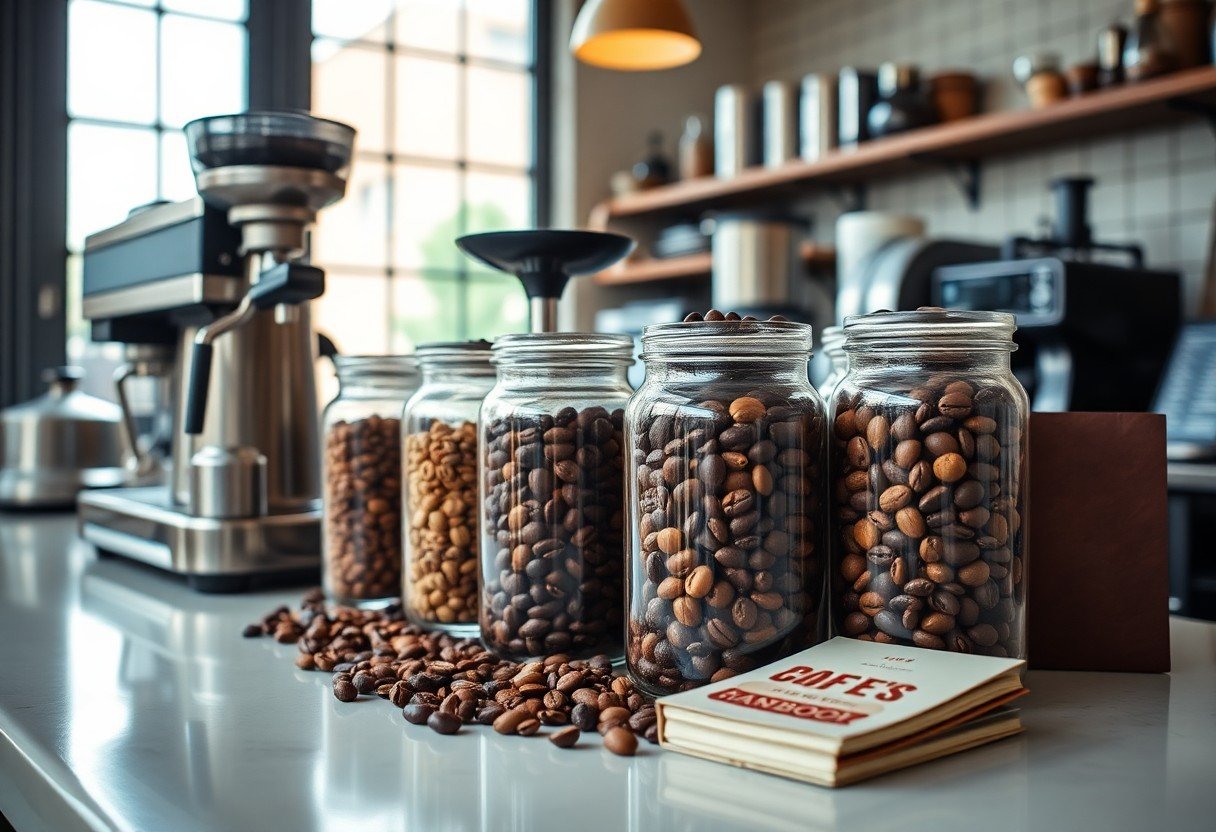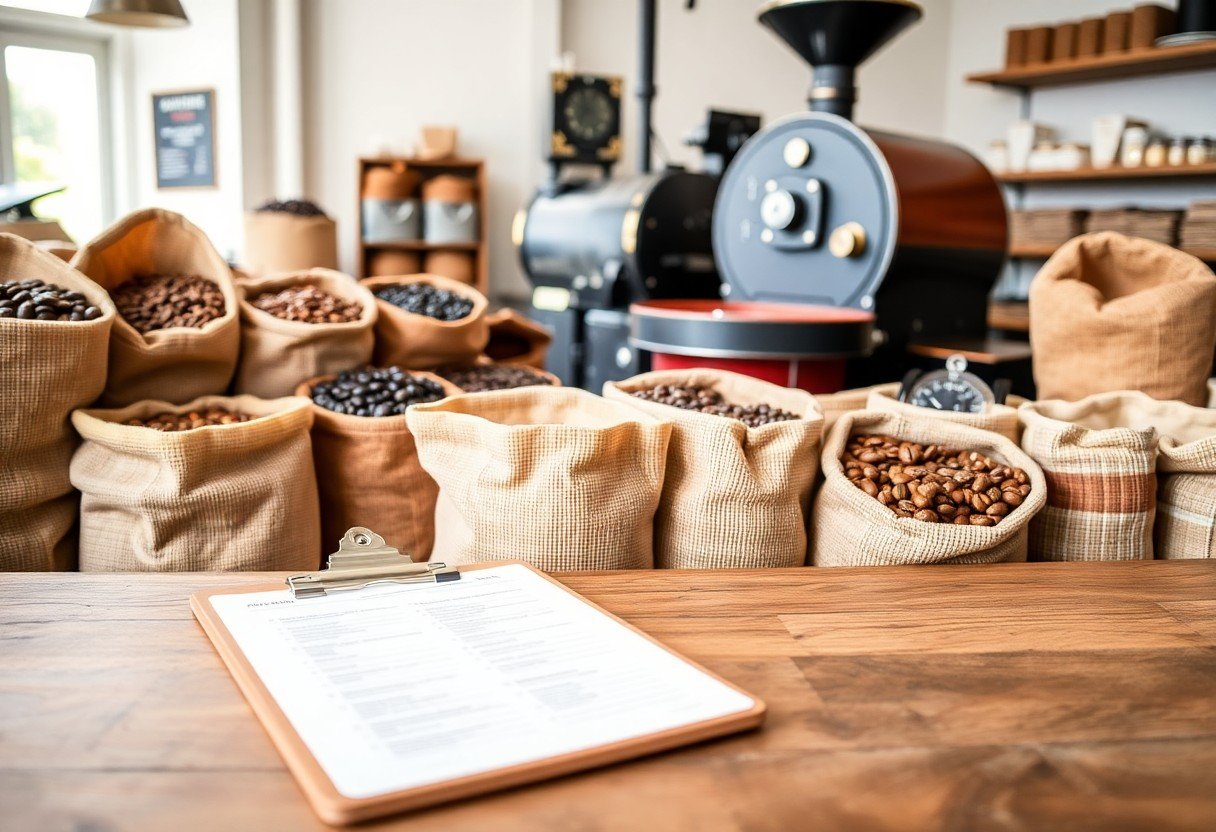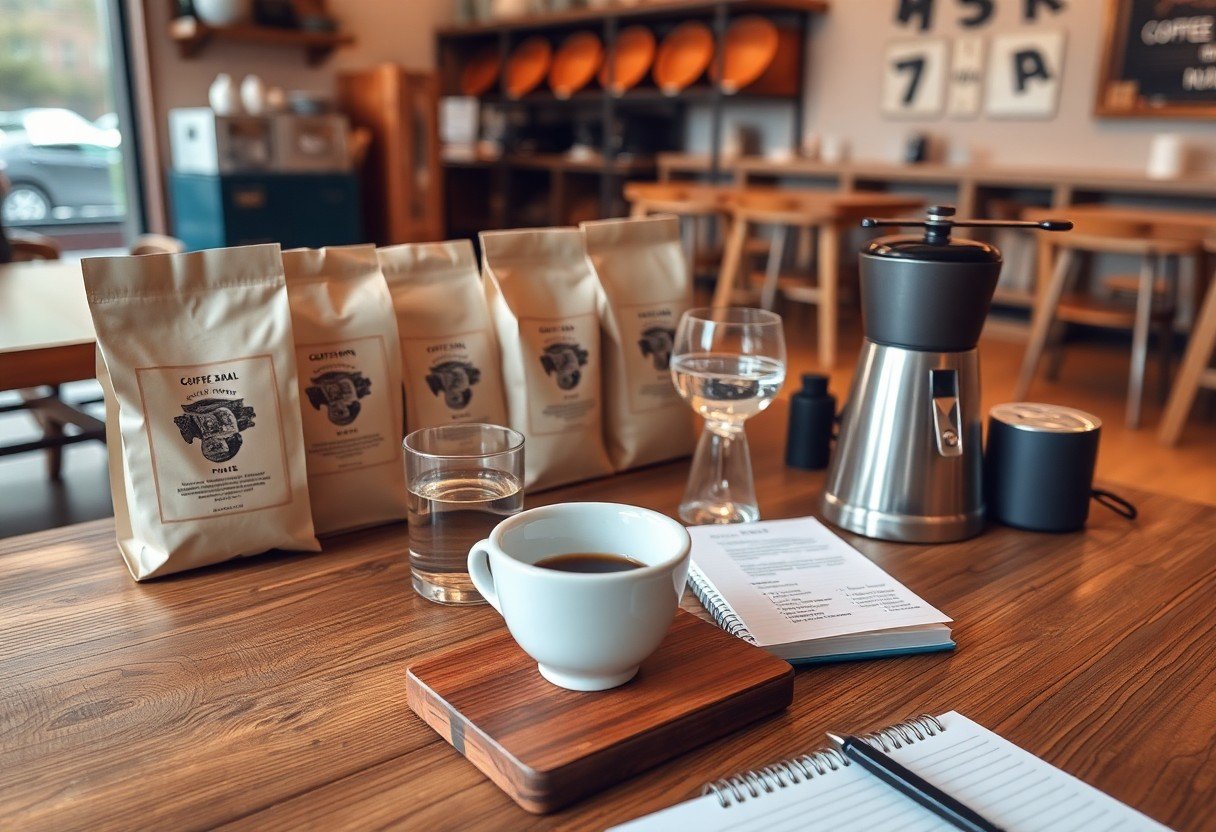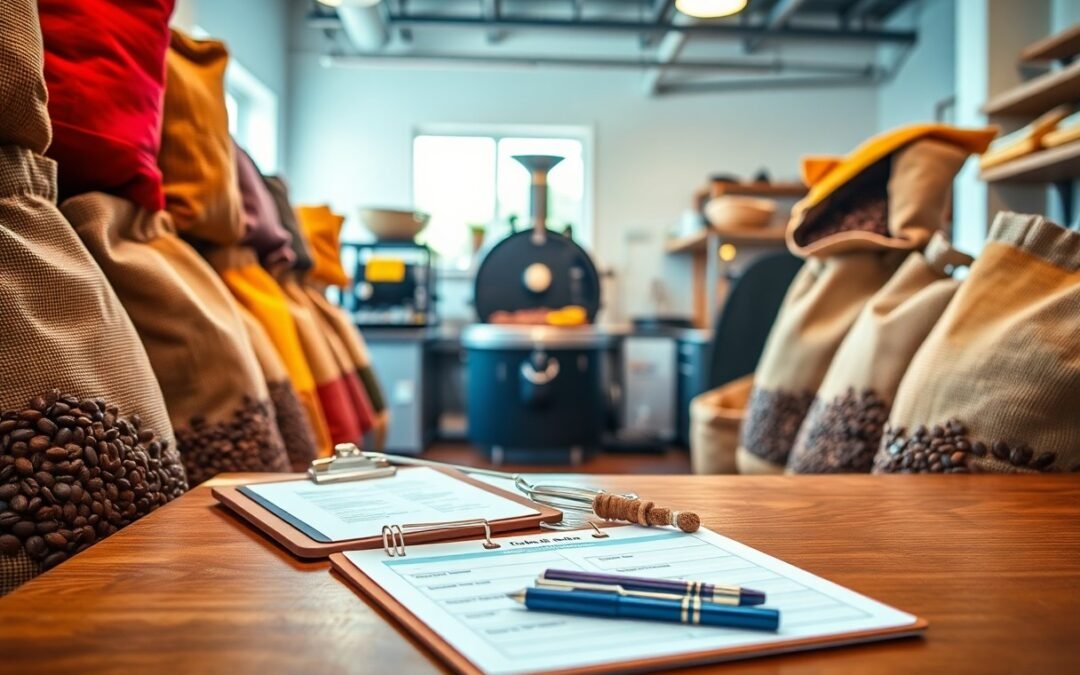Just navigating the vibrant landscape of artisan coffee roasteries in Australia can be overwhelming, but with the right approach, you can discover your ideal brew. This guide will equip you with vital tips and criteria for selecting a roastery that aligns with your taste preferences, ethical values, and overall coffee experience. By understanding what to look for in quality, sourcing, and community engagement, you’ll enhance your coffee journey and enjoy each cup with confidence.
Decoding the Roast: Varietals and Flavor Profiles
Exploring Bean Origins: The Role of Terroir
Your coffee’s taste is largely influenced by its origin, which includes the environmental conditions where the beans are grown. Terroir encompasses factors such as altitude, soil type, and climate. For instance, beans from Ethiopia are often characterized by fruity and floral notes due to the region’s unique climate and rich volcanic soil. In contrast, beans from Brazil may present a chocolatey, nutty flavor profile influenced by their lower altitudes and varied processing methods.
Understanding Roast Types: Light, Medium, and Dark
Roast types significantly affect your coffee experience, with each level unlocking different flavor attributes. Light roasts typically highlight the inherent characteristics of the bean, often bringing forward bright acidity and a more pronounced flavor complexity. Popular among coffee enthusiasts, these roasts retain high caffeine content and tend to showcase fruity floral notes. On the other hand, medium roasts strike a balance between acidity and body, thus offering a more rounded flavor. This roast is favored for its versatility, offering some sweetness while still allowing the bean’s natural flavors to shine.
Dark roasts emphasize a bolder, smokier profile due to the longer roasting time, which results in a richer body and lower acidity. They often feature chocolate and caramel notes, appealing to those who prefer a robust cup. Recognizing your preferences among these roasts can enhance your coffee selection.
| Roast Type | Taste Characteristics |
|---|---|
| Light | Bright, fruity, acidic |
| Medium | Balanced, sweet, slight acidity |
| Dark | Rich, bold, low acidity |
| Flavor Profile | Varies by origin and roast intensity |
| Caffeine Content | Highest in light roasts, decreases with darkness |
Each roast type is an exploration of taste — lighter roasts may be ideal for those who enjoy bright and fruity notes, while medium roast drinkers might appreciate complexity without overwhelming bitterness. Dark roast aficionados often seek a strong, comforting flavor. Your choice will depend on personal taste preferences, so trying various options can provide insights into which style resonates with you. Recognizing these distinctions will guide you in selecting the best beans for your unique coffee journey.
- Light roasts are best for highlighting bean origin.
- Medium roasts offer a well-rounded flavor experience.
- Dark roasts provide a bold, intense coffee flavor.
- Familiarize yourself with bean origins to enhance your selections.
- Recognizing your palate can improve your craft coffee experience.

Essential Criteria for Selecting a Roastery
Quality Assurance: Sourcing and Sustainability Practices
Evaluating the sourcing and sustainability practices of a coffee roastery provides insight into the quality of the beans you are about to enjoy. Look for roasteries that partner with reputable coffee farms and cooperatives that prioritize fair trade and organic methods. Certifications such as Rainforest Alliance or Fair Trade can indicate commitment to ethical practices, making the coffee not just a beverage, but a product of conscientious production. Understanding the journey of your coffee from seed to cup enhances your appreciation for the brew and aligns your purchases with your values.
Your choices can directly impact the livelihoods of coffee farmers and the environment, so seek out roasteries that transparently share their sourcing journeys. Engage with brands that have clear traceability about where their coffee originates, as it reflects the quality and care invested in the beans. Support those that highlight sustainable agricultural practices, which not only yield superior flavor profiles but also contribute positively to global coffee culture.
Freshness Matters: The Importance of Roast Date
The roast date plays a pivotal role in your coffee’s flavor and overall quality. Freshly roasted coffee is at its peak within a window of time, generally between 3 to 14 days post-roast. After this period, the flavors start to diminish due to oxidation, which can compromise the complexity and freshness you want in your cup. By choosing a roastery that prominently displays roast dates, you ensure the beans you select offer the vibrant tastes intended by the roasters.
Buy from roasteries that provide transparency about their roasting schedules and work to minimize the time between roasting and your purchase. Freshness not only influences flavor but also retains aromatic compounds that contribute to a rich coffee experience. Consider local roasteries that roast in small batches and deliver frequently to ensure you enjoy coffee at its most flavorful state.

The Craftsmanship of Coffee Roasting
From Bean to Brew: The Roasting Process Explained
The roasting process transforms green coffee beans into the aromatic, flavorful morsels that you brew into your perfect cup. Initially, raw beans are heated in large roasters, where they undergo physical and chemical changes. This begins with the drying phase, where moisture is removed, followed by the first crack, signaling the beans are reaching their light roast phase. Depending on your flavor preference, you might choose to stop the roast here or continue through the aroma development phase to medium or dark roasts, resulting in caramelization of sugars and the development of complex flavors.
The Art of Blending: Creating Unique Flavor Combinations
A skilled roaster doesn’t just focus on single-origin beans but often creates blends to offer a more complex flavor profile. Blending involves strategically combining beans from different regions or roast levels to achieve a desired taste. For example, a roastery might mix a bright Ethiopian bean known for its acidity with a smooth Brazilian bean, balancing the high notes of citrus with the comforting sweetness of chocolate. The goal is to craft a harmonious final product that appeals to a wide range of palates.
Consider how different characteristics in beans can enhance your coffee experience. Blending allows for creative exploration, enabling you to discover unique combinations that highlight specific flavors. Using seasonal beans, roasters can innovate new blends, making each batch a unique experience. This attention to detail is a hallmark of artisan coffee roasteries, offering you a chance to explore exciting and diverse flavor profiles in your daily brew.
Navigating Local vs. Online Roasteries
The Benefits of Supporting Local Roasters
Choosing a local roastery not only fosters community ties but also emphasizes the importance of fresh coffee. Roasting in small batches allows local roasters to maintain quality control, resulting in unique flavors that may not be replicated by larger operations. Community engagement often leads to collaborations with local farmers and businesses, reinforcing ethical sourcing practices and bolstering the local economy. By supporting your local roaster, you’re directly contributing to sustainable practices that benefit both environmental and social aspects of coffee production.
Local roasters frequently host events and tastings, offering you the chance to learn about different brewing methods and the stories behind each bean. These experiences provide a deeper appreciation for the craft, allowing you to engage with experts and fellow coffee enthusiasts. Thus, by selecting a local option, you not only enjoy a high-quality product but also become part of a vibrant coffee culture.
Online Options: Accessing Global Flavors
Exploring online roasteries opens up a world of coffee beyond your immediate geography. Many global roasters curate selections from diverse regions, enabling you to experience unique flavor profiles that are not commonly available locally. For example, a roaster based in Australia might have direct partnerships with farms in Ethiopia or Colombia, offering you fresh, single-origin coffees that highlight the distinct tastes of their terroir. With just a few clicks, your palate can begin on an international journey.
Online purchases often come with additional perks like subscription services, ensuring you receive a regular supply of your favorite brews without the hassle of constant reordering. Many online platforms include detailed tasting notes, brewing recommendations, and origin stories, enhancing your overall coffee experience. This convenience and knowledge can deepen your appreciation for how a single coffee bean travels from farm to cup, enriching your coffee-drinking rituals.

Sampling and Tasting: Developing Your Palate
Engaging in the practice of sampling various coffees allows you to understand the intricate flavors and aromas that different beans can offer. By experimenting with different brewing methods, you can draw out unique taste profiles that might surprise you. Consider participating in local cupping sessions at your chosen artisan roastery, where you can taste multiple varieties side by side and refine your palate. For further insights and a broader exploration, check out A Guide to the Best Coffee Roasters in Australia – Future Positive.
The Role of Cupping in Quality Assessment
Cupping serves as a systematic method for evaluating the quality of coffee through a standardized process. During a cupping session, you’ll assess aspects such as aroma, acidity, body, and flavor by evaluating ground coffee beans prepared in hot water. This method not only allows for the identification of defects but also highlights the unique characteristics that different origins impart to the beans. By participating in these tastings, you can develop a more refined understanding of what constitutes high-quality coffee.
As you become accustomed to the cupping process, you’ll start to discern subtle notes and qualities that may have previously gone unnoticed. The insights gained during these sessions can significantly inform your future purchases, allowing you to choose coffees that align with your developing tastes and preferences.
Building Your Coffee Profile: Notes and Preferences
Your coffee profile is a reflection of the flavors and characteristics you enjoy most. Start documenting your experiences with different coffees, noting specific flavor notes like chocolate, berry, or floral undertones. Pay attention to the brewing method and the type of roast that brings out these preferred flavors. Over time, you’ll establish a clearer picture of what you appreciate in your cup, making it easier to choose future selections that suit your palate.
Exploring different coffees systematically allows you to create a personalized guide to your taste preferences. Once you identify favored flavor profiles, seek out roasters that specialize in those characteristics, ensuring each cup is tailored to your liking. Engaging with community discussions or online forums can also expose you to similar interests, helping you discover new offerings that align with your profile.
To wrap up
Considering all points, selecting the best artisan coffee roastery in Australia relies on your understanding of quality, sourcing, and roasting techniques. You should assess various factors such as the origin of the beans, the roasting process, and the flavor profiles to ensure they align with your taste preferences. Engaging with local roasteries through tastings can also enhance your knowledge and appreciation, allowing you to make an informed decision that suits your palate.
Your journey into the world of artisan coffee does not end with choosing a roastery. Exploring the different brewing methods and experimenting with various blends may open new avenues of flavor and enjoyment. Stay open to discovering unique offerings from local roasters, as these experiences will enrich your coffee-drinking ritual and support small businesses in your community.
FAQ
Q: What factors should I consider when choosing an artisan coffee roastery in Australia?
A: Consider the roastery’s sourcing practices, quality of beans, roasting techniques, flavor profiles, and customer reviews.
Q: How important is the origin of coffee beans in selecting a roastery?
A: The origin greatly affects flavor and quality. Look for roasteries that provide detailed information about their bean sources.
Q: What types of roasting profiles should I look for?
A: Explore light, medium, and dark roasts, depending on your taste preference. Each profile offers distinct flavor characteristics.
Q: How can I ensure the freshness of the coffee I purchase from a roastery?
A: Look for roasteries that roast to order or provide roasting dates on their packaging to ensure optimal freshness.
Q: Are there any sustainable practices I should look for in an artisan coffee roastery?
A: Seek out roasteries that prioritize ethical sourcing, environmentally-friendly packaging, and support for coffee-growing communities.

